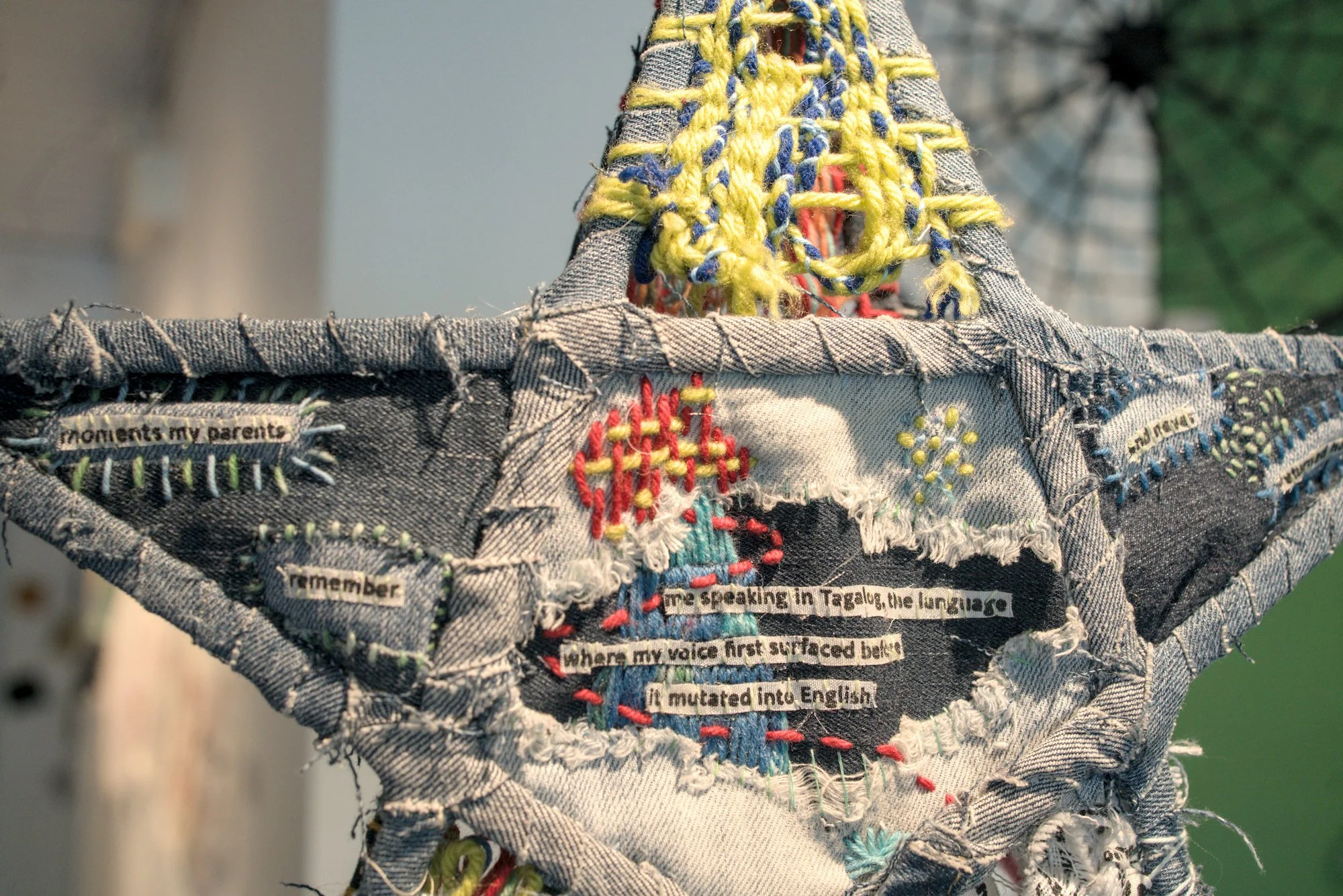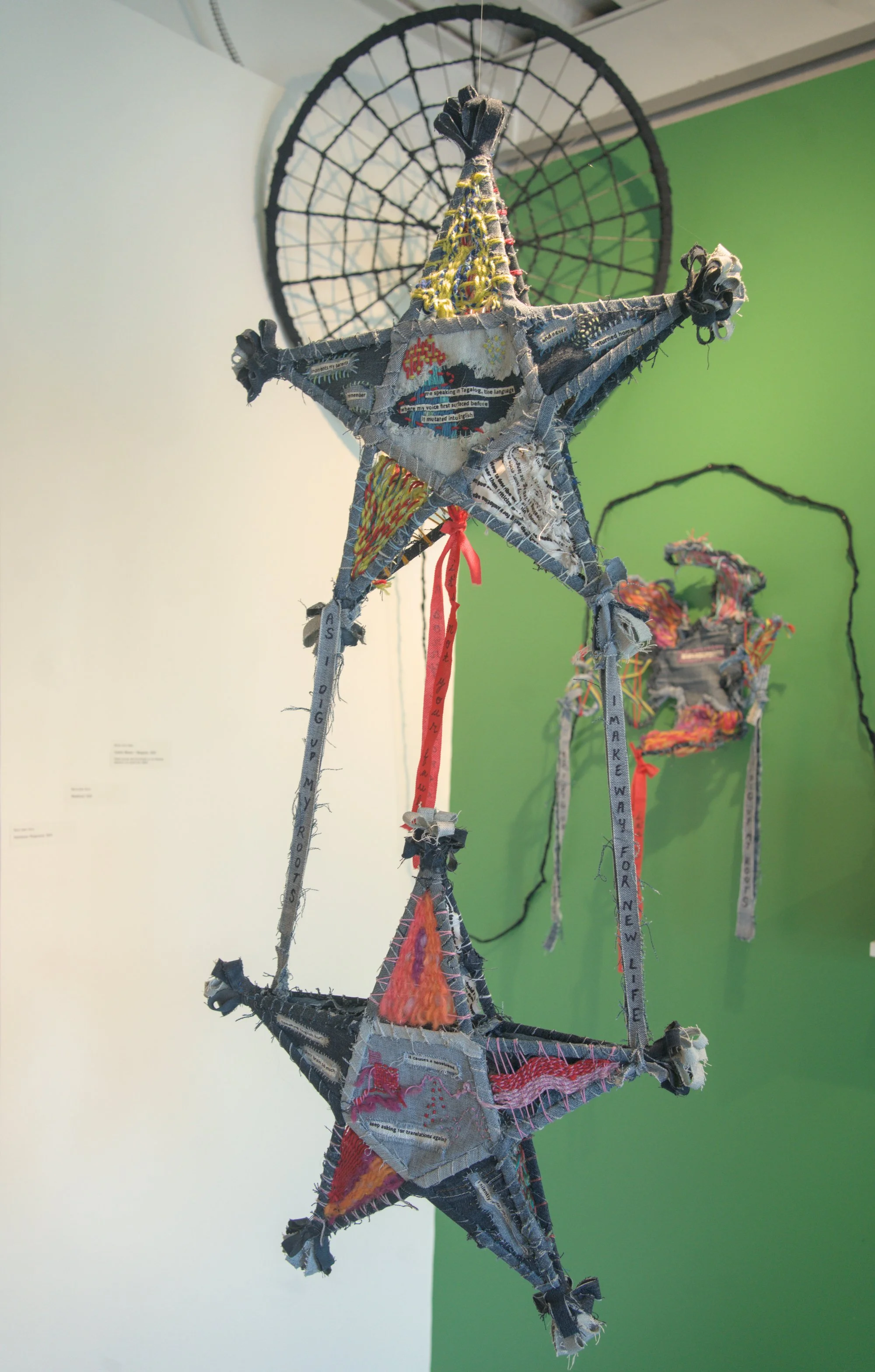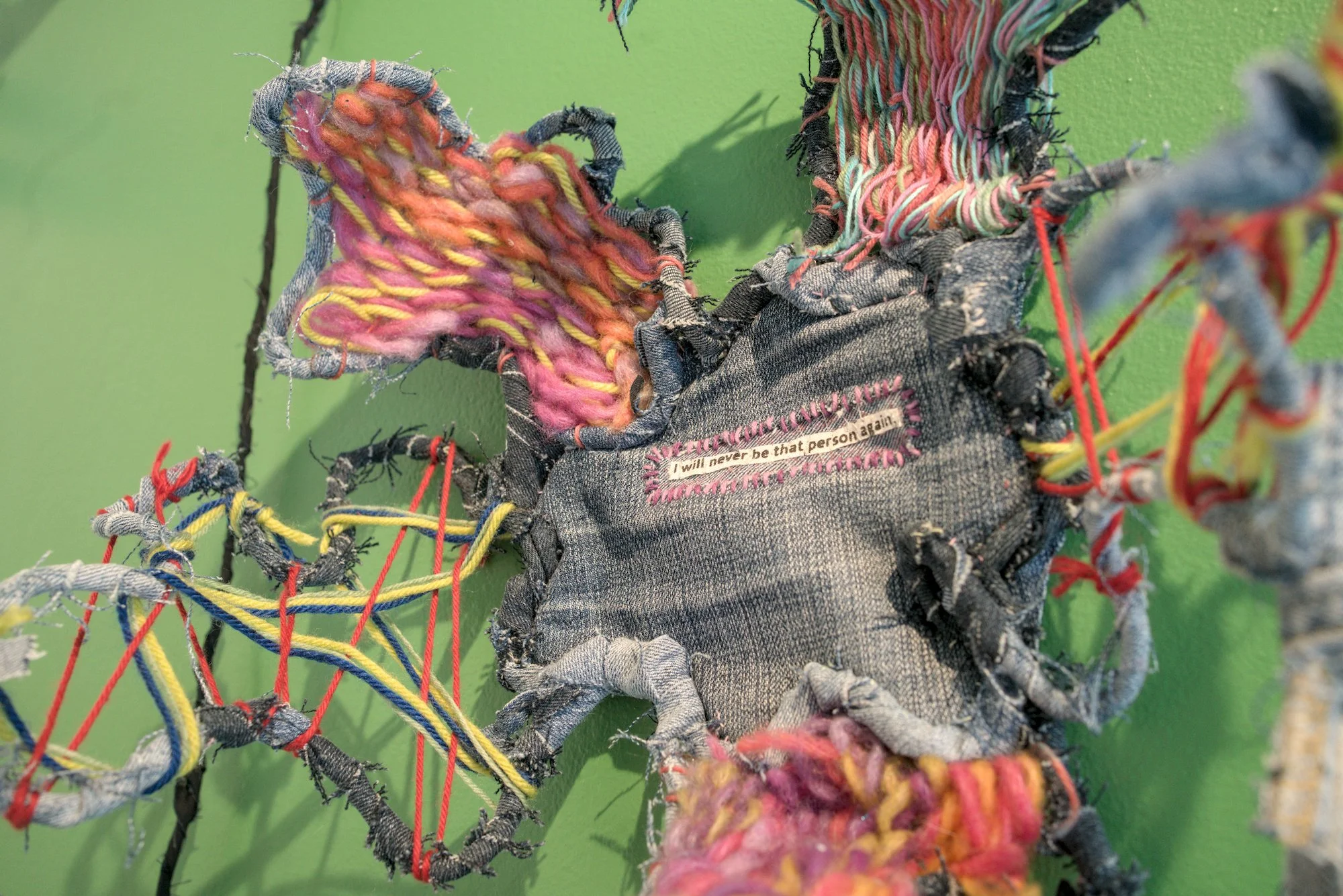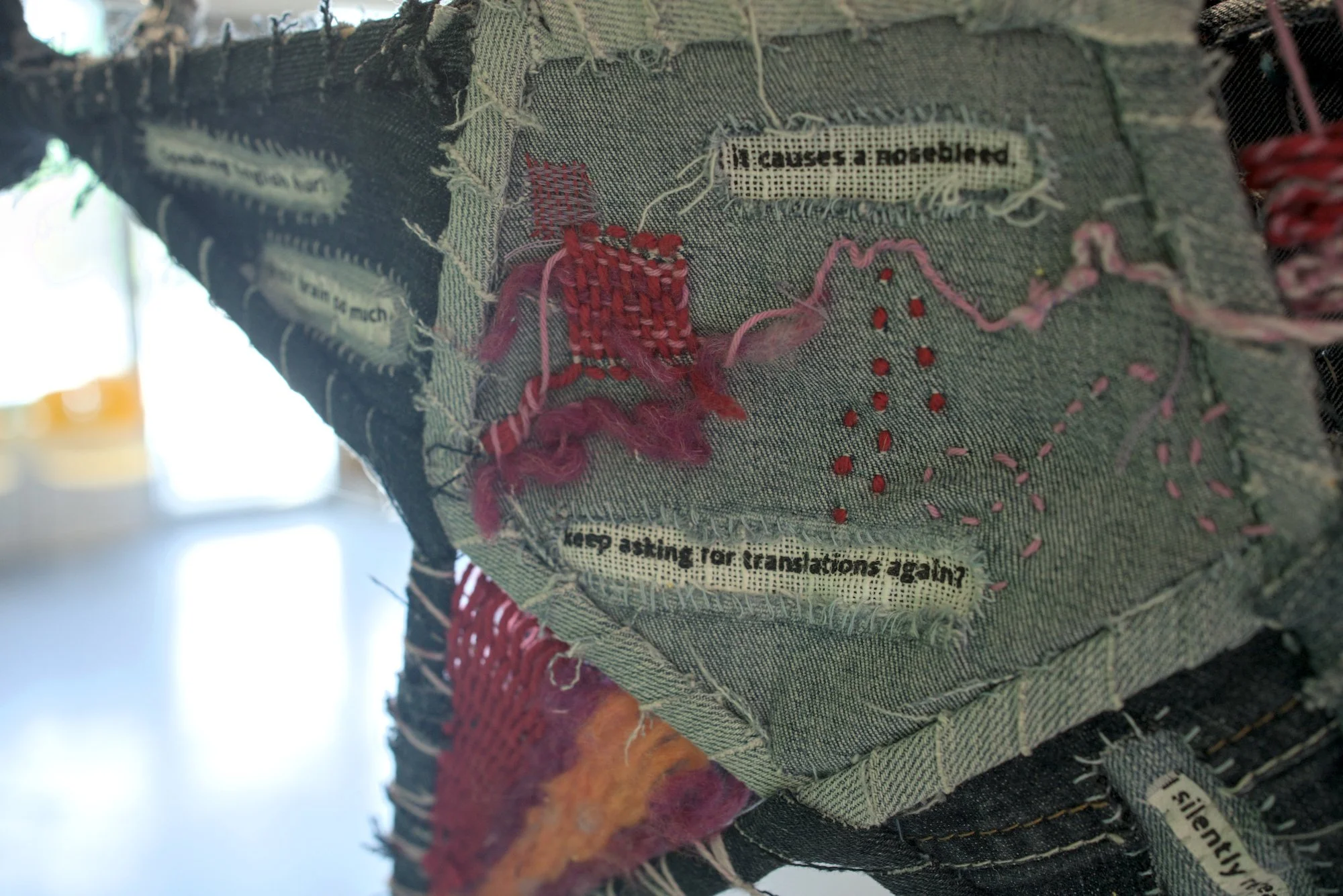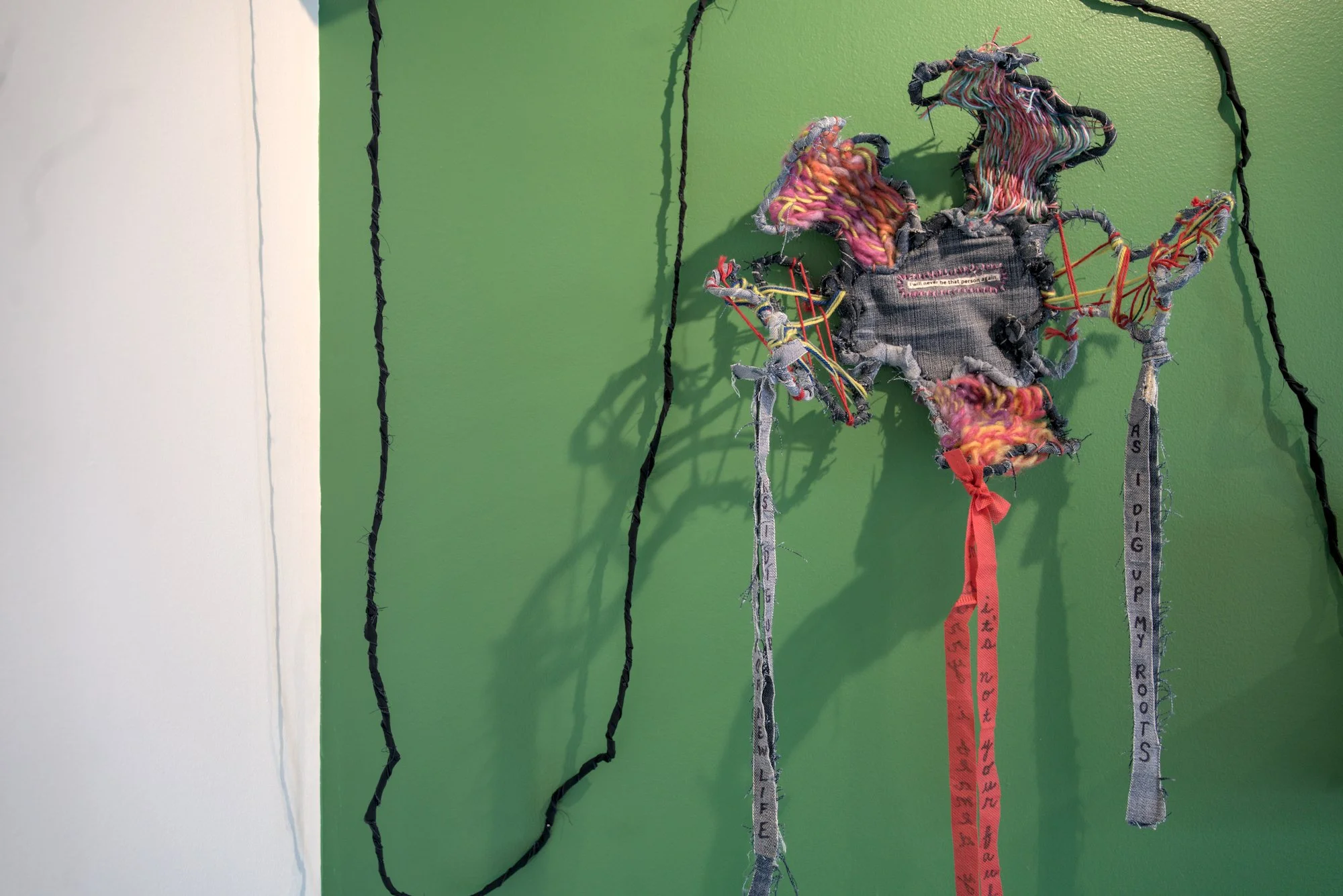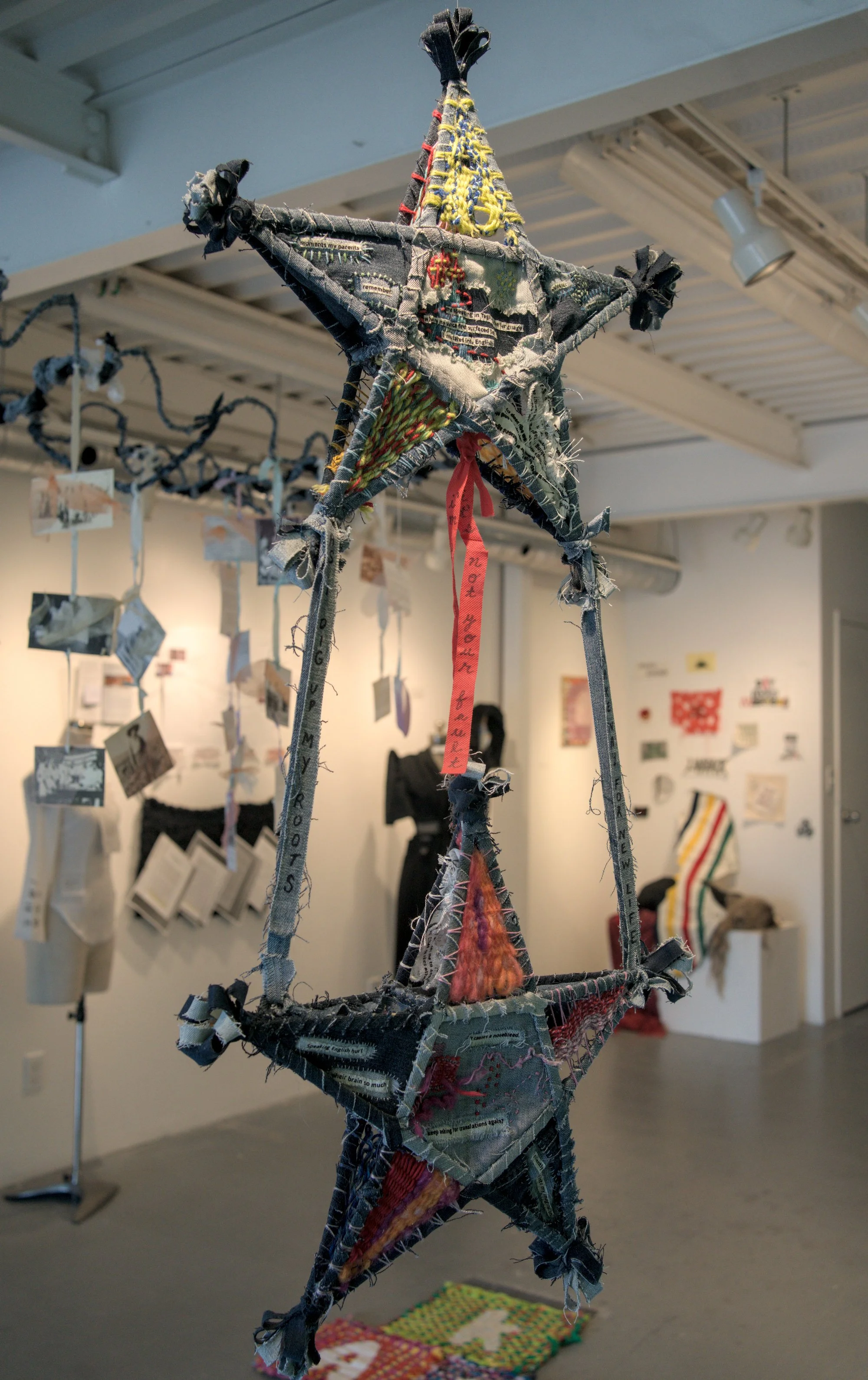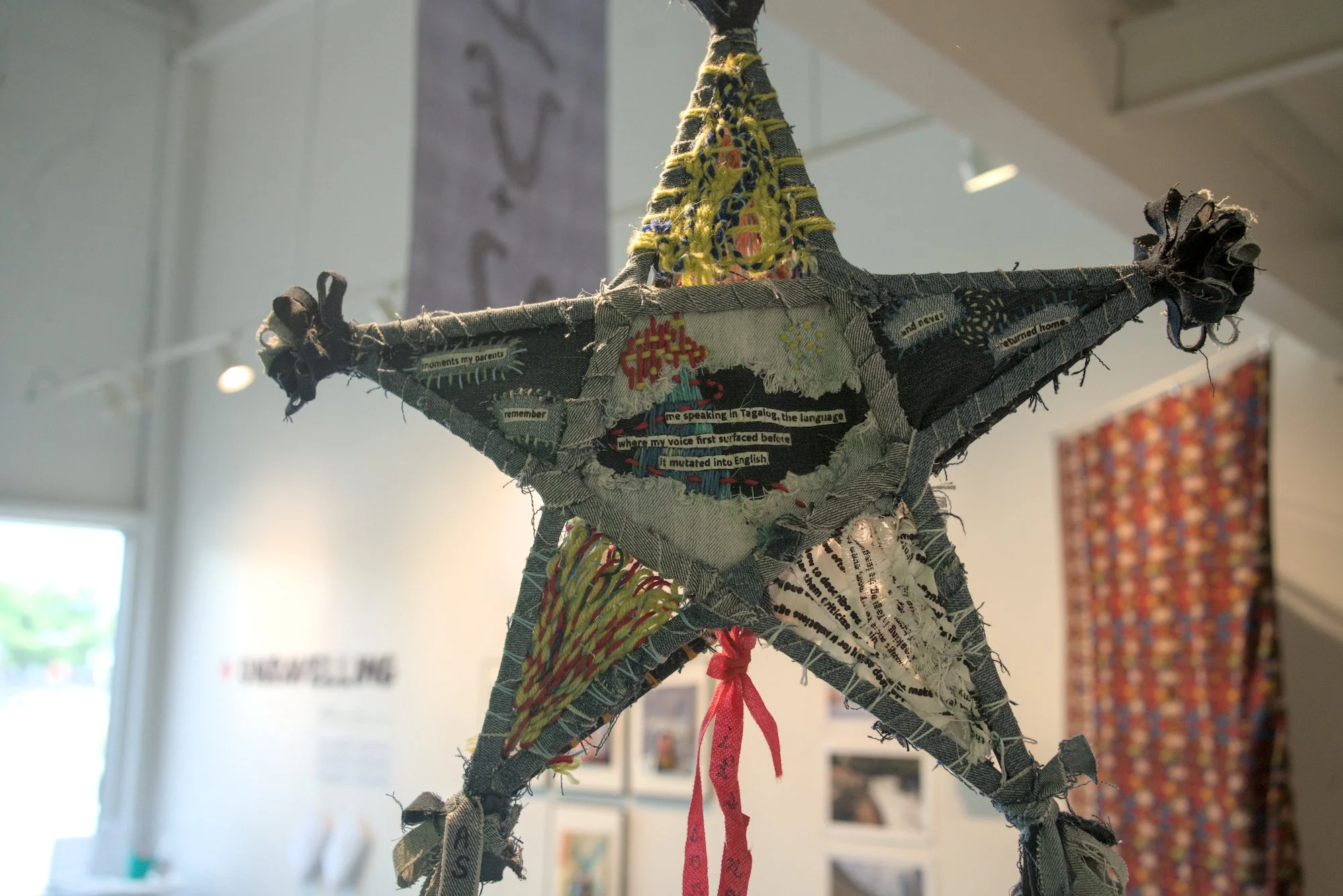Nosebleed (2025)
Exhibited with Kamalayan Playground at habi habi po’s Unravelling (2025) show at Gallery 101 in Ottawa, Ontario.
Photos by Kristina Corre.
I screen-printed and hand-sewed my writing onto worn denim that belonged to my mom and denim from my own childhood. I used different visible mending techniques like darning, embroidery, and patchwork as a way to let go of this dream of returning to an original state of “perfection”. The process did bring a new sense of reconciliation with my past, present, and future. I accept that I can never be a native speaker of my mother tongue. But I can trace my own colorful path into Tagalog.
I use text, textile, and visible mending as a way of theorizing my lived experience and healing from my grief that I had suppressed in my heart and in my throat for over 20 years.
Nosebleed is the second iteration of my text(ile) parol sculptures. This time, I made my writing legible and centered, rather than leaving some writing partly obscured with weaving.
There’s a saying in Tagalog, “nakaka nosebleed”, that is said when someone is speaking English and it hurts their brain so much that it makes their nose bleed.
This work is about my relationship to Filipino language, but it’s also about my relationship with my mom. The long strands hanging down from the least parol-like textile sculpture read, “As I dig up my roots, I make way for new life” as a mantra for myself, and “I’m sorry I blamed you, it’s not your fault,” written to my mother, because I am no longer filled with resentment and anger about her decision to extinguish my Tagalog. I excavate the grief of losing my language, but I am not drowning in sadness anymore.
